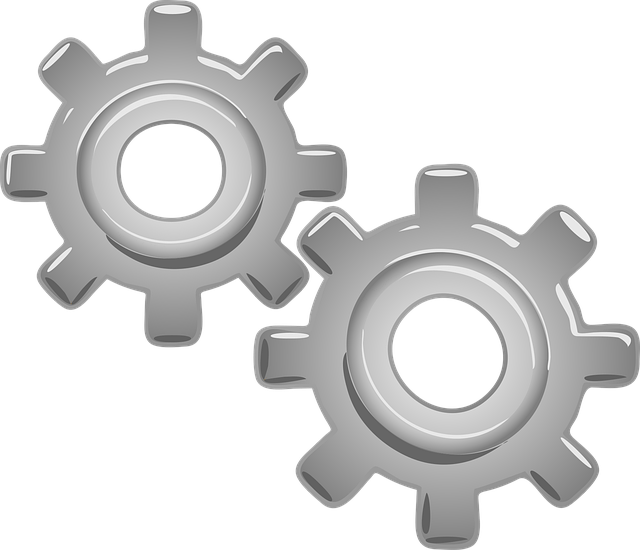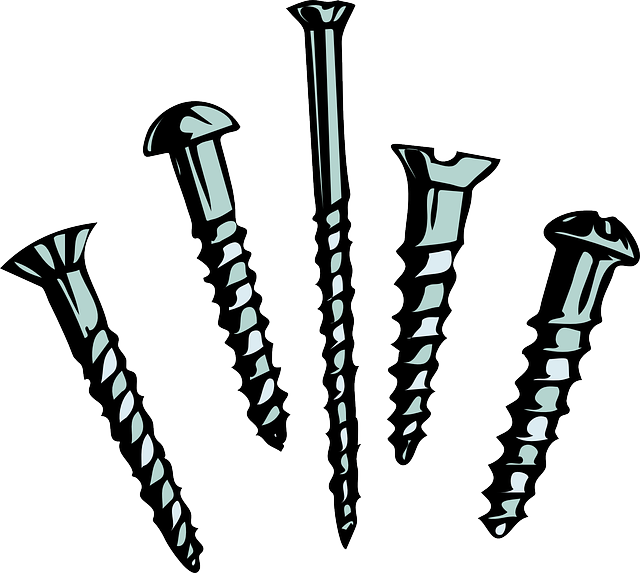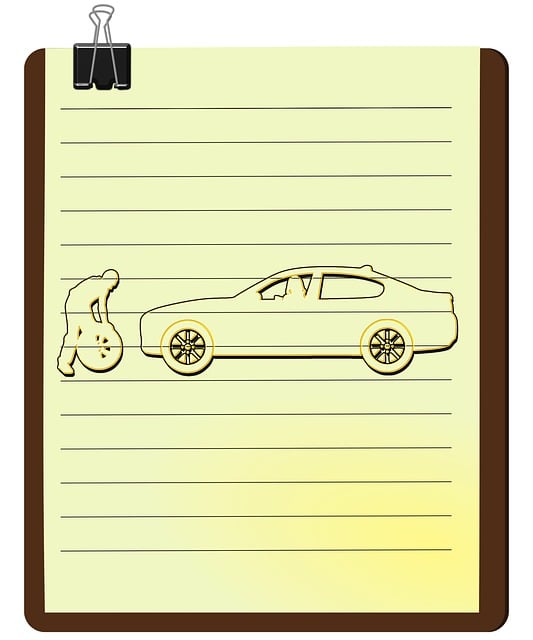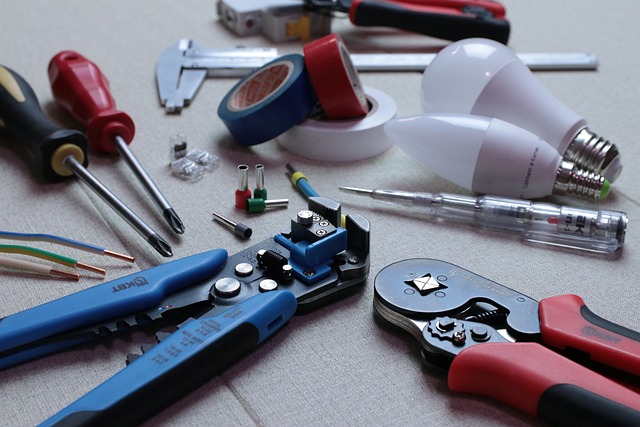Capturing Repairs: When Technicians Document with Photos
Repair documentation services are crucial in vehicle repair, especially car bodywork, using detailed…….
In today’s complex technological landscape, efficient and accurate repair documentation is an often-overlooked yet critical aspect of product maintenance and sustainability. The repair documentation service (RDS) is a specialized field that focuses on creating, managing, and disseminating detailed repair instructions, schematics, and knowledge bases for various products, primarily in the technology, automotive, and manufacturing sectors. This article aims to provide an extensive exploration of RDS, its multifaceted operations, and its profound impact on industries worldwide. By delving into its historical evolution, current practices, and future prospects, readers will gain a comprehensive understanding of why this service is essential for innovation, sustainability, and economic growth.
Repair documentation service involves the development and provision of comprehensive repair resources tailored to specific product types or industries. RDS encompasses several key components:
Technical Content Creation: This includes writing and designing repair manuals, troubleshooting guides, assembly instructions, and disassembly procedures. Content is created by subject matter experts, engineers, and technical writers.
Digital Document Management: RDS utilizes specialized software to organize, store, and retrieve repair documents efficiently. These systems ensure version control, accessibility, and easy updates.
Knowledge Base Development: A knowledge base is a centralized repository of technical information, including frequently asked questions (FAQs), troubleshooting tips, and solutions to common issues. This resource empowers technicians and users to find answers swiftly.
Training and Support: RDS providers often offer training programs, webinars, and workshops to educate technicians and end-users on product repair processes. They may also provide 24/7 technical support to ensure effective knowledge transfer.
The concept of RDS has evolved significantly over the past few decades, driven by technological advancements and changing industry demands:
Early Days: In the 1950s and 1960s, repair documentation was primarily in the form of print manuals, often bulky and difficult to update. With the advent of personal computers in the 1980s, digital documentation started gaining traction.
Digital Revolution (1990s – 2000s): The internet age brought about a paradigm shift, enabling online access to repair information. Early RDS providers created basic HTML pages and PDFs for distribution. Over time, the content became more interactive and multimedia-rich.
Modern Era: Today, RDS has become highly sophisticated, leveraging advanced technologies like augmented reality (AR), virtual reality (VR), 3D modeling, and artificial intelligence (AI). These innovations enhance user experience, improve diagnostics, and streamline repair processes.
Repair documentation service is a global phenomenon, with its reach extending across continents:
North America: Companies like Microsoft, Apple, and General Motors heavily rely on RDS to support their extensive product portfolios. The US market leads in terms of investment in advanced RDS technologies.
Europe: European Union (EU) regulations emphasize product durability and repairability, driving the need for comprehensive RDS. Countries like Germany are known for their robust engineering documentation standards.
Asia-Pacific: Rapidly growing economies like China and India are experiencing a surge in demand for RDS due to expanding manufacturing bases and increasing consumer electronics adoption.
Rest of the World: Emerging markets, including Latin America and Africa, are witnessing an uptick in RDS adoption as governments and industries focus on local content creation and skill development.
Several trends are currently shaping the future of repair documentation:
Open-Source Documentation: There is a growing movement towards open-source repair manuals, encouraged by initiatives like Repair.org, which promotes transparency and accessibility to technical knowledge.
Digital Twin Technology: This involves creating digital replicas of physical products, enabling virtual repair and maintenance. It is particularly useful in complex systems and industries like aerospace.
AI-Powered Diagnostics: Artificial intelligence algorithms can analyze sensor data and historical repair records to assist technicians in diagnosing issues more efficiently.
Augmented Reality (AR) Repair Instructions: AR technology overlays digital instructions onto physical products, providing step-by-step visual guidance for repairs.
The global RDS market is characterized by steady growth, driven by the increasing complexity of modern products and growing consumer demand for repairability:
| Year | Global RDS Market Size (in Billions USD) | Growth Rate (%) |
|---|---|---|
| 2020 | $5.2 | – |
| 2021 | $5.8 | 11.3 |
| 2022 (Est.) | $6.5 | 12.5 |
Large technology companies, automotive manufacturers, and original equipment manufacturers (OEMs) are the primary investors in RDS:
Tech Giants: Apple, Microsoft, and Google invest heavily in RDS to support their hardware products, ensuring efficient repairs and extended product lifespans.
Automotive Sector: Car manufacturers like Tesla, Volkswagen, and Toyota are pioneering advanced RDS practices to facilitate electric vehicle (EV) maintenance and repair.
OEMs and Aftermarket Providers: Companies offering aftermarket parts and services also invest in RDS to ensure compatibility and streamline their operations.
The economic implications of RDS are far-reaching:
Job Creation: RDS contributes to skilled job creation, particularly in technical writing, software development, and customer support roles.
Extended Product Lifespan: By making repair information readily available, RDS encourages product maintenance, reducing the need for frequent replacements.
Reduced E-Waste: Efficient RDS practices can help combat electronic waste by promoting responsible product disposal and recycling.
Competitive Advantage: Businesses offering comprehensive RDS gain a competitive edge in terms of customer satisfaction, loyalty, and brand reputation.
Several technological advancements have revolutionized the landscape of RDS:
Cloud-Based Document Management: Cloud storage systems enable secure access to repair documents from anywhere, facilitating collaboration among global teams.
Machine Learning (ML) for Content Generation: ML algorithms can automatically generate repair instructions based on product data, reducing manual effort and errors.
3D Modeling and Visualization: 3D models enhance the understanding of complex products, making it easier to create accurate assembly and disassembly guides.
AR and VR Repair Training: Immersive technologies provide realistic training scenarios for technicians, enabling them to gain hands-on experience without handling physical components.
The future holds immense possibilities for RDS, with emerging technologies set to transform the industry:
Internet of Things (IoT) Integration: As IoT devices become more prevalent, RDS will need to adapt to support remote diagnostics and repair for connected products.
Natural Language Processing (NLP): NLP can enable natural language queries for technical information, making knowledge bases more accessible to a wider range of users.
Blockchain for Documentation Security: Blockchain technology can enhance the security and integrity of repair documentation, ensuring data authenticity and preventing tampering.
AI-Driven Predictive Maintenance: AI algorithms can analyze product usage patterns and sensor data to predict maintenance needs, enabling proactive repair scheduling.
Several policies and regulatory frameworks govern RDS, ensuring consumer protection, safety, and environmental sustainability:
Waste Electrical and Electronic Equipment (WEEE) Directive (EU): This EU legislation promotes the recycling of electronic waste and encourages repairability to reduce e-waste.
Right to Repair Laws: Various states in the US and countries worldwide have enacted or proposed “right to repair” laws, mandating that manufacturers provide access to repair information and parts.
Product Safety Standards: Organizations like Underwriters Laboratories (UL) and Intertek set safety standards for products, including guidelines for repair documentation.
Policies and regulations have a profound impact on the development and implementation of RDS:
Compliance Requirements: Manufacturers must adhere to specific documentation standards to ensure compliance with regulatory bodies’ mandates.
Encouraging Repairability: Policies like right to repair promote the creation of comprehensive, easily accessible RDS, fostering a culture of product maintenance.
Sustainability Focus: Environmental regulations drive the development of eco-friendly RDS practices, encouraging digital documentation and efficient content management.
Despite its numerous benefits, RDS faces several challenges:
Content Volume and Complexity: As products become increasingly sophisticated, repair documentation can grow massive in size and complexity, making creation, management, and retrieval challenging.
Language Barriers: Globalization presents the challenge of localizing RDS to cater to diverse linguistic needs while ensuring accuracy and consistency.
Data Security and Privacy: With sensitive product information being shared, ensuring data security and privacy is crucial, especially with the rise of cloud-based systems.
Accessibility for End-Users: Making repair information accessible to non-technical users remains a challenge, as many individuals lack the skills or confidence to perform repairs.
To overcome these challenges, the following strategies can be employed:
Standardization and Modularity: Developing standardized documentation modules for common product types simplifies creation, maintenance, and localization efforts.
Cloud Security Measures: Implementing robust security protocols, encryption, and access controls in cloud systems safeguards sensitive data.
Digital Literacy Programs: Governments and organizations can invest in digital literacy initiatives to empower end-users with the skills needed to access and interpret repair information.
Collaborative Content Creation: Encouraging industry collaboration can lead to shared knowledge bases, reducing redundancy and improving content quality.
Apple’s iFixit is a renowned example of successful RDS implementation. This non-profit organization provides free repair manuals for Apple products, fostering a community of DIY enthusiasts and promoting product repairability:
Key Features: iFixit offers detailed step-by-step guides with high-quality images and videos, making repairs accessible to both technical and non-technical users.
Impact: Since its launch in 2007, iFixit has created a vast library of repair documentation, fostering a culture of DIY repairs and reducing electronic waste.
Toyota has pioneered advanced RDS practices for its hybrid vehicle models, ensuring efficient maintenance and repair:
Approach: Toyota developed a comprehensive digital knowledge base, including interactive 3D models and virtual diagnostics tools, to support specialized hybrid vehicle repairs.
Benefits: This innovative RDS system enables technicians to quickly diagnose issues, access relevant service procedures, and enhance overall customer satisfaction.
Philips, a global healthcare technology company, adopted an open-source approach to RDS for its medical devices, leading to significant industry impact:
Initiative: Philips released its repair documentation for selected medical devices under an open-source license, allowing healthcare professionals and researchers worldwide access.
Outcomes: This move fostered collaboration, accelerated innovation in medical device maintenance, and improved patient care by enabling quicker troubleshooting and repairs.
The future of RDS holds immense growth potential in several areas:
Automotive Sector: With the global shift towards electric and autonomous vehicles, RDS will play a pivotal role in their maintenance and repair, requiring specialized documentation for advanced systems.
IoT Devices: As IoT continues to expand, RDS will need to accommodate the unique challenges of repairing interconnected devices, including remote access and diagnostics.
Sustainable Products: The growing focus on sustainable manufacturing and recycling will drive the development of RDS for eco-friendly products, encouraging responsible disposal and repair practices.
Several emerging trends are set to shape the future:
AI-Powered Knowledge Bases: Advanced AI algorithms can analyze vast amounts of technical data to create dynamic knowledge bases, providing real-time updates and personalized recommendations.
Augmented Reality (AR) in Training: AR will continue to transform training programs, offering immersive learning experiences for technicians, particularly in complex industries like aerospace and medical devices.
Global Standardization: Efforts to standardize RDS content and formats globally will improve interoperability, making it easier to share and access documentation across borders.
Repair documentation service is a critical enabler of innovation, sustainability, and economic growth across various sectors. From its humble beginnings as print manuals, RDS has evolved into a sophisticated, technology-driven field. As the world becomes more interconnected and environmentally conscious, the role of RDS will only continue to expand. By embracing technological advancements, adhering to policies and regulations, and addressing challenges head-on, the repair documentation service industry is poised for significant growth while making a positive impact on society.
Q: How does RDS benefit manufacturers?
A: RDS benefits manufacturers by reducing customer support costs, improving product reputation through enhanced repairability, and facilitating efficient after-sales service, leading to increased customer satisfaction.
Q: What is the role of AI in RDS?
A: AI enhances RDS by automating content generation, analyzing large datasets for knowledge base enrichment, and providing personalized recommendations to users. It also enables predictive maintenance capabilities.
Q: Are open-source repair manuals legally valid?
A: While open-source manuals provide valuable information, their legal validity depends on local regulations. Some countries have specific laws regarding intellectual property rights, so it’s essential to consult legal experts.
Q: How can RDS improve product design?
A: By analyzing repair data and customer feedback, RDS insights can guide product designers in creating more durable, modular, and repairable products, reducing the need for frequent replacements.
Q: Can AR/VR technology replace hands-on training?
A: While AR/VR offers immersive training experiences, practical, hands-on training is still essential for complex repairs. These technologies are best used to supplement traditional training methods.

Repair documentation services are crucial in vehicle repair, especially car bodywork, using detailed…….

Pre-repair photo documentation is crucial for professional auto painting, dent removal, and fender r…….

Photo documentation is vital for auto body repair transparency, verifying work quality, and maintain…….

Visual evidence is crucial for validating insurance claims, especially in complex cases like Mercede…….

Repair documentation services streamline insurance claims for auto body damage by providing detailed…….

In the digital era, auto collision centers have adopted paperless repair documentation services, dri…….

The integration of Artificial Intelligence (AI) into repair documentation services is transforming a…….

High-quality, detailed images are crucial for effective auto repair documentation, ensuring accurate…….